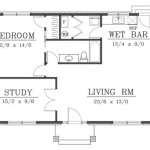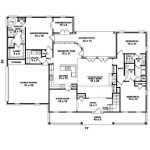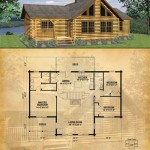How to Find the Floorplan of a House
Acquiring the floorplan of a house is crucial for various reasons, ranging from planning renovations and interior design to understanding the property's layout for insurance purposes or simply satisfying curiosity. Finding a house's floorplan can sometimes be a straightforward process, but in other instances, it might require some digging and resourcefulness. This article provides a comprehensive guide to navigating the common and less common methods for obtaining a floorplan.
The availability of floorplans varies significantly depending on the age of the house, its location, and whether it was custom-built or part of a larger development. Newer homes, especially those in planned communities, are more likely to have readily available floorplans than older, individually constructed houses. Similarly, homes that have been recently listed for sale often have floorplans included in the listing information. Factors such as local regulations regarding record keeping and historical preservation can also impact the accessibility of floorplan documents.
Checking Existing Records and Documents
The first step in finding a floorplan is to examine any existing documents related to the property. This approach is often the simplest and most direct method. Begin by gathering all available paperwork related to the house, including deeds, mortgages, property tax records, and past sales agreements. These documents sometimes contain attachments or references to architectural plans, which may include a floorplan. Additionally, any records related to previous renovations, additions, or permits may include submitted floorplans.
Another valuable source of information can be homeowner's insurance policies. Insurance companies often require detailed information about the property, and while they might not always have a complete floorplan, they may possess documents that provide clues or partial layouts. Reviewing the fine print of the policy and contacting the insurance provider could potentially lead to discovering useful information related to the house's structure.
Furthermore, if the house has undergone any significant work, such as remodeling or additions, building permits would have been required. These permits are typically filed with the local municipality and often include detailed architectural drawings, including floorplans. Searching the property address within the local building permit archives can sometimes yield valuable results. However, accessing these records may involve visiting the local government office and navigating their record-keeping system.
Examining any existing surveys of the property is also a worthwhile endeavor. While a survey primarily focuses on property boundaries, it may also include a basic outline of the house's footprint, which can provide a general idea of the layout. In some cases, a more detailed survey might even include interior wall dimensions, although this is less common.
Finally, consider contacting the previous owners of the house. They may have retained copies of the original blueprints or floorplans from when the house was built or when they undertook any renovations. Even if they no longer have the physical documents, they might recall details about where the plans were stored or which architect or builder was involved, which could provide a new avenue for investigation.
Utilizing Online Resources and Real Estate Listings
The internet has become an invaluable tool for accessing information about properties, including floorplans. Real estate websites and online property databases often contain detailed information about houses that are currently listed for sale or that have been sold recently. Many real estate listings include floorplans as part of the marketing materials, providing potential buyers with a visual representation of the property's layout. Searching for the house's address on major real estate websites, such as Zillow, Redfin, and Realtor.com, is a good starting point.
Even if the house is not currently listed for sale, historical listings might still be available in online archives. These archives can sometimes be accessed through the real estate websites themselves or through dedicated property search engines. Searching for the property address within these archives may uncover previous listings that included floorplans.
Several websites specialize in collecting and providing property data, including assessed values, property tax information, and ownership history. These sites, such as CountyOffice.org and similar local government websites, may also contain scanned images of property records, which could include floorplans or other relevant architectural drawings. Accessing these resources may require creating an account or paying a fee.
Another online resource to explore is architectural design websites and online plan repositories. These platforms often allow users to search for house plans based on various criteria, such as square footage, style, and number of bedrooms. While it is unlikely to find an exact match for a specific house, browsing these collections may provide inspiration or a close approximation of the floorplan, particularly if the house is a common model from a specific era.
Social media platforms can also be surprisingly useful. Local history groups or neighborhood forums may have members who possess information about the house or who know where to find relevant documents. Posting a request for information about the house on these platforms could potentially lead to valuable leads or contacts.
Engaging Professionals and Utilizing Professional Services
When existing records and online resources prove insufficient, enlisting the help of professionals can be the next logical step. Architects, surveyors, and building designers possess the expertise and resources to recreate a floorplan even if the original documents are unavailable. This approach typically involves a combination of on-site measurements, analysis of existing structural elements, and the creation of a new floorplan based on the collected data.
Hiring an architect is particularly beneficial if the goal is to obtain a detailed and accurate floorplan suitable for construction or renovation purposes. An architect can not only create a floorplan but also assess the structural integrity of the house and identify any potential issues that need to be addressed. They can also advise on building codes and regulations, ensuring that any planned renovations comply with local requirements.
A surveyor can provide valuable information about the property's boundaries and the location of the house within those boundaries. While surveyors typically focus on exterior features, they may also be able to provide a general outline of the house's footprint, which can serve as a starting point for creating a more detailed floorplan. Surveys are particularly useful for understanding the relationship between the house and the surrounding landscape.
Real estate agents with experience in the local market can also be a valuable resource. They may have access to historical property records or know where to find floorplans that are not publicly available. Additionally, they can often provide insights into the history of the house and any past renovations or additions that may have been undertaken.
Finally, consider contacting local historical societies or preservation organizations. These groups often maintain archives of historical blueprints and architectural drawings, which may include floorplans of older houses in the area. They may also be able to provide information about the original architect or builder of the house, which could lead to discovering more documentation.
Recreating a floorplan through professional services typically incurs a cost, which varies depending on the complexity of the house and the level of detail required. Obtaining quotes from multiple professionals and comparing their services and fees is recommended before making a decision.
In conclusion, acquiring a floorplan can involve multiple approaches. It is recommended to begin with the simplest and most accessible methods, such as examining existing documents and utilizing online resources, before resorting to more complex and potentially costly options, such as engaging professional services. Persistence and a thorough investigation often lead to the desired outcome.

10 Ways To Find The Floor Plan Of A House

9 Ways To Find Floor Plans Of An Existing House Archid

How To Find Floor Plans Blue Prints Of Your House

10 Ways To Find The Floor Plan Of A House

9 Ways To Find Floor Plans Of An Existing House Archid

How To Find Floor Plans Blue Prints Of Your House

How To Properly Read Floor Plans And What Details Look For

As Built Floor Plans

How To Find Floor Plans Blue Prints Of Your House

10 Ways To Find The Floor Plan Of A House








